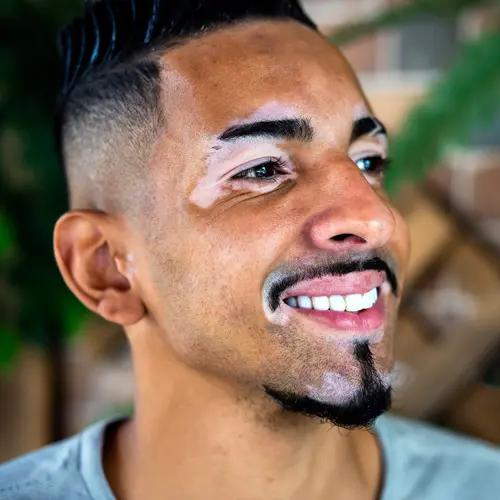What Is Lichen Striatus?
If you find a stripe-like rash on your child’s arm or leg, you might be concerned. But it might be a harmless rash called lichen striatus.
This type of rash usually forms one or two lines of pink, raised bumps. It’s not contagious, and it goes away on its own within a year. But when in doubt, you should always see your child’s doctor.
How common is it?
Lichen striatus is uncommon. It is most likely to appear in children. Over half of the people who get it are between 5 and 15 years old. It affects more girls than boys and is found in all racial and ethnic groups.
Lichen striatus in adults
This rash is rare in adults. When it does happen, it is sometimes called adult blaschkitis. These conditions are very similar except for the age of the people they affect. Doctors disagree about whether they are the same or separate conditions.
Lichen Striatus Causes
It’s not clear what causes lichen striatus. It could be linked to genes or the environment. Some studies have linked it to allergies and inflammatory responses, although the evidence is mixed. It sometimes appears after viral infections, vaccinations, or injuries.
Lichen Striatus Symptoms
It’s a raised, bumpy, pink rash that forms lines. These lines are usually found on the arms and legs, but can also appear on the neck, butt, or trunk. Sometimes, the rash is itchy.
The spots start out small, and can be white, pink, flesh-colored, or red. (They tend to be lighter-colored on dark skin.) A week or two later, they begin forming into lines. These lines can be dull red and scaly.
They’re usually between 2 millimeters (the size of a grain of rice) and 2 centimeters (slightly smaller than the size of a quarter) wide. They tend to be a few centimeters long, but can extend along the entire arm or leg. Sometimes, two lines form next to each other. Rarely, the rash can cause nails to split or fall off.
These stripes form along the lines of Blaschko. These invisible lines show the direction that cells grew in during fetal development. The lines of Blaschko typically follow specific patterns on the body, including:
- Running up and down the arms and legs
- Forming V shapes on the neck and upper spine
- Forming S shapes on the belly
- Extending throughout other parts of the body
Lichen Striatus Diagnosis
Your child’s doctor will examine the rash. They also might remove a tiny piece of skin and look at it through a microscope. This is called a skin biopsy.
Lichen Striatus Treatment
The rash goes away on its own within a year. It stays for an average of 9.5 months, but can last as little as a month or up to 3 years. Once it goes away, it usually doesn’t come back. It doesn’t leave behind any mark or irregularity. But some people notice that the skin might be a little paler or darker for a while. This is temporary.
If the rash is itchy or bothersome, you can apply moisturizer or steroid cream. You also could take a low-dose steroid pill. For more severe cases (including rashes on the face or nails), tacrolimus or pimecrolimus cream can help.
Lichen Striatus Complications
Unusual skin coloration (skin being lighter or darker than usual) can continue for months or years after the rash has gone away. This happens in about half the people who get lichen striatus.
When to See a Doctor
Even though lichen striatus is harmless, it’s important that you talk to your child’s doctor about it. They can make sure the rash is not caused by something else.
In general, you should see a doctor when your child has a rash:
- In and around the eyes
- With blue, red, or purple spots
- That is crusty, has blisters, or oozes
- At the same time as a fever, stiff neck, dizziness, trouble breathing, or vomiting
When in doubt, always talk to your child’s doctor.
Takeaways
Lichen striatus is a harmless, noncontagious rash found in children. It causes pink, tan, or flesh-colored bumps that connect into one or more stripes. It usually goes away on its own within a year.
Lichen Striatus FAQs
Is lichen striatus cancerous? Lichen striatus is not cancerous. It’s not clear what causes it, but it might be linked to allergies or inflammation.
How do you stop lichen striatus from spreading? Lichen striatus is not an infection, so it doesn’t spread from person to person. It sometimes affects more than one person in the same house, but that is probably from sharing the same environment.
Is lichen striatus rare? This rash is relatively uncommon.
Can COVID cause lichen striatus? Lichen striatus sometimes appears after viral infections or vaccinations, including COVID-19.
How long does it take lichen striatus to go away? It usually goes away within a year, but it can take as little as a month or as long as 3 years.
What is the difference between linear psoriasis and lichen striatus? Both conditions cause rashes along the Blaschko lines, but linear psoriasis tends to develop later.

